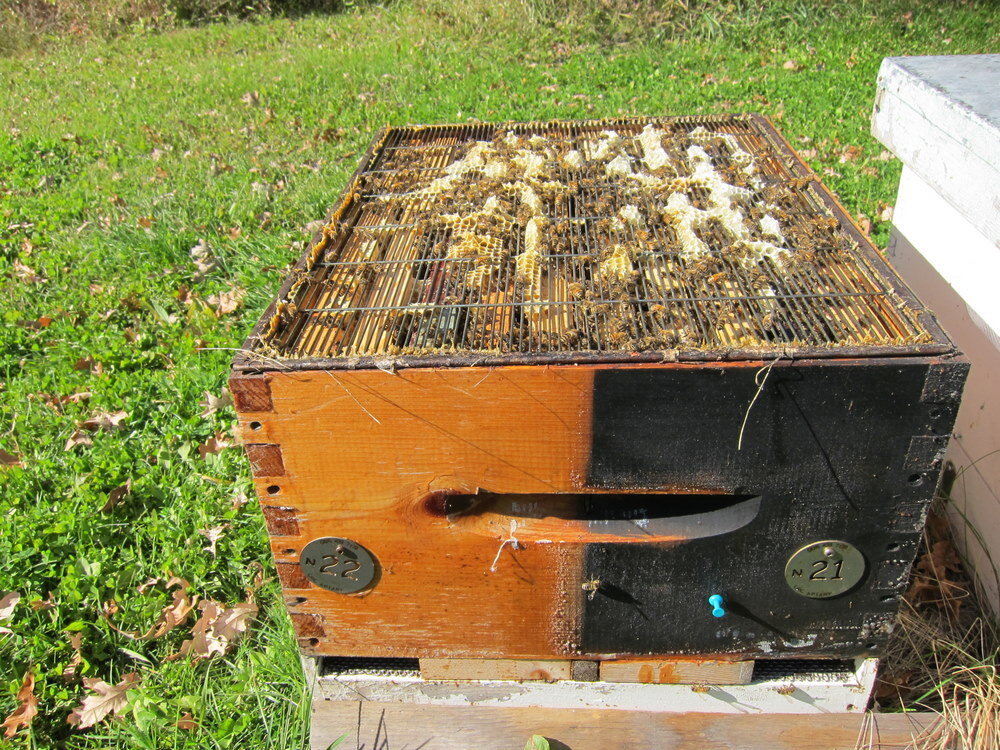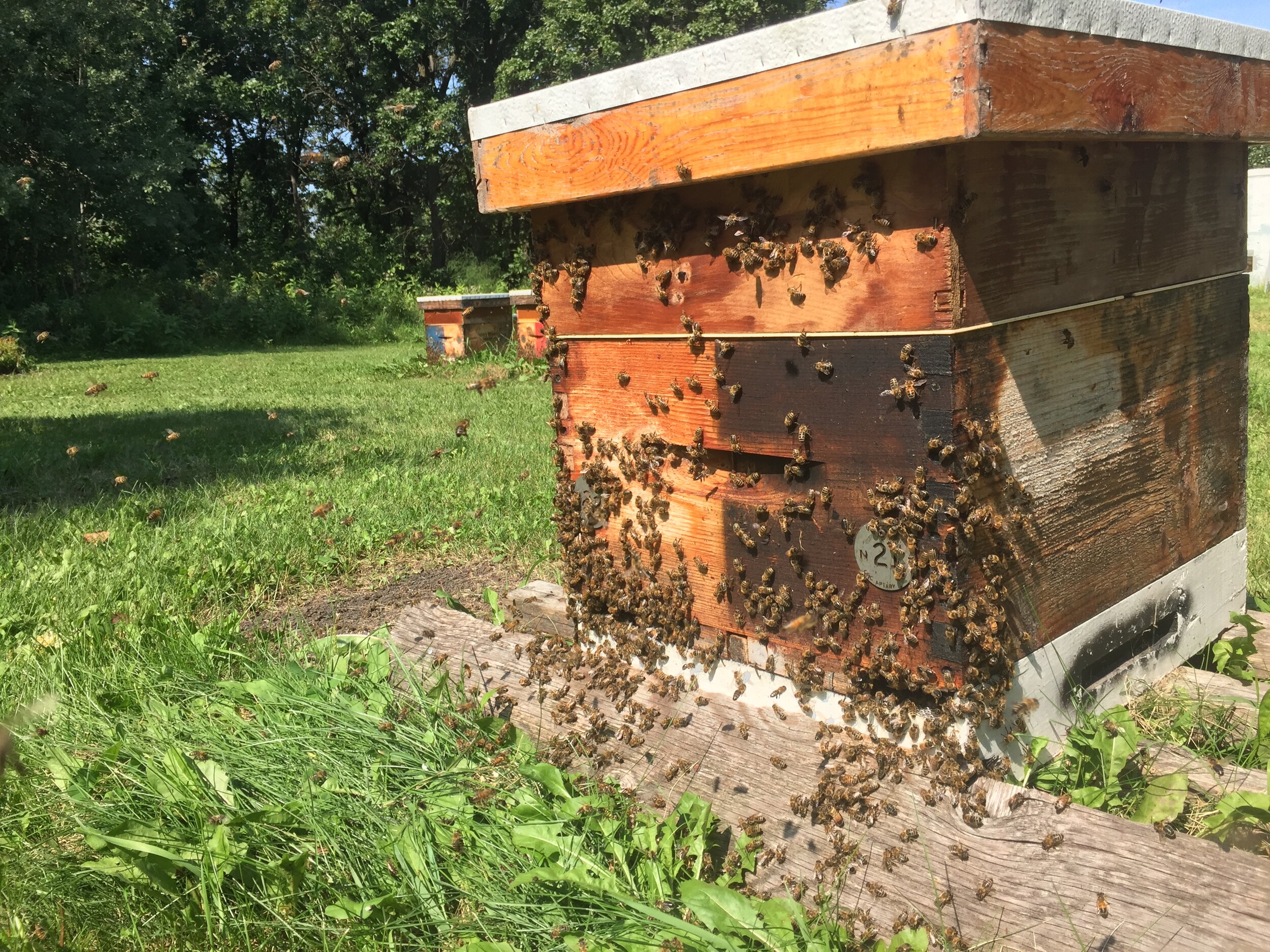Managing 5 Frame Nucs
Standard hive with 2 nucs housed side by side.
Managing 2 5-frame nucs in one brood chamber is a very efficient way of starting nucs for increasing your hive numbers. Nucs of that size require a lot less care and attention then smaller ones. Rather then having different size equipment around I find it best to use only standard equipment, that way everything is interchangeable.
There are several advantages of having 2 nucs in one standard box.
You don’t need any additional equipment. All you need to do is route a groove in the center of the box so that a 1/8″ divider can be easily slipped inside. This grooved hive body can be used as any other box if you don’t need it for a nuc.
5 frames is a fair size for a nuc, it means that the bees will have amble supply of food and can raise a lot of brood without the beekeeper having to baby sit the hive to make sure it doesn’t run out of food or space.
In winter the hives can share warmth, resources and bees. If for some reason the queen is lost in one hive the bees will migrate over to the other side to strength that nuc. I also find that if one side has more food available it is shared with the other side.
When first setting up the nucs you will need a frame or 2 of brood and 1 of food, depending on what time of year and the climate in your area. The nucs in one box need to be given both a queen cell or a queen. It works best if you don’t gave one side a queen cell and the other a queen. If you do, then most of the bees will migrate over to the queen side and the nuc with a queen cell will find it hard to except the queen cell. At this point a solid inner cover is over the top, the bees can’t get from one side to the other. Once the queens on both sides are laying, the inner cover is replace with a queen excluder on top so the bees can mingle. As long as the queens can’t get at each other they will be just fine. The nucs are now separated by a solid divider on the side and only by a queen excluder on top.
I find that placing nucs side by side works well, even if your queens need to be mated they somehow manage to find their way into the correct hives. The hives in the picture have different colours at the entrances, but I have hives that are all the same colour, and I don’t see a difference in the success of the mated queens.
The entrances are placed furthest apart, this probably helps the bees finding into the correct hive.These nucs are fairly well established already, and have some burr comb on top of the queen excluder.
A close up of the top entrance. The inner cover gets propolized unto the queen excluder so that nothing can move.
The nucs are separated in spring when both nucs are bursting with bees. In Spring there is a great advantage of keeping bees well crowded so that they can preserve a constant temperature inside the brood nest. In Manitoba the spring time temperatures vary greatly, from +20C during the day to close to freezing at night. It is critical that the hive has enough bees to stabilize such temperature fluctuations. The more bees you have in the hive the better they can maintain a constant temperature. Usually the nucs are ready for separate hives when the dandelions are in full bloom, food and bees are abundant. A hive body is placed next to the nuc hive and an entrance right next to the old entrance is provided. The nuc on that side is transferred into the new hive. It takes the bees a few minutes to reorient to the new entrance. Once the bees are used to their new entrance location then the hives can be separated by a foot or so. Of course you can always move one hive to a new site which simplifies this step.
Here is a picture of nucs side by side. The hive on the left is stronger then the other hive. As long as they are up to full strength in fall they have a good chance of surviving a cold Manitoba winter.
When it comes to feeding them in the fall these hives are treated the same way as your standard hives, except a queen excluder is left in place. The bees make there way through the queen excluder and up to the feeder to take down the syrup. The amount of syrup is the same as a standard hive as well.
These hives were in 5 frame nucs coming out of a cold Manitoba winter; they were wintered outside. The nucs were separated into full hives in spring when the nucs were bursting with bees. As you can see they brought in an incredible amount of honey that year.








